Related to: ESD protection of ADC input.
To protect an ADC input from out-of-spec voltages, including ESD, it is often recommended to use diodes connected to GND and Vcc. If I have a 1k series resistor on the ADC (ADS1158) input, is it OK to rely on the ADC's internal diodes, or is it worth adding the diodes as discrete components.
